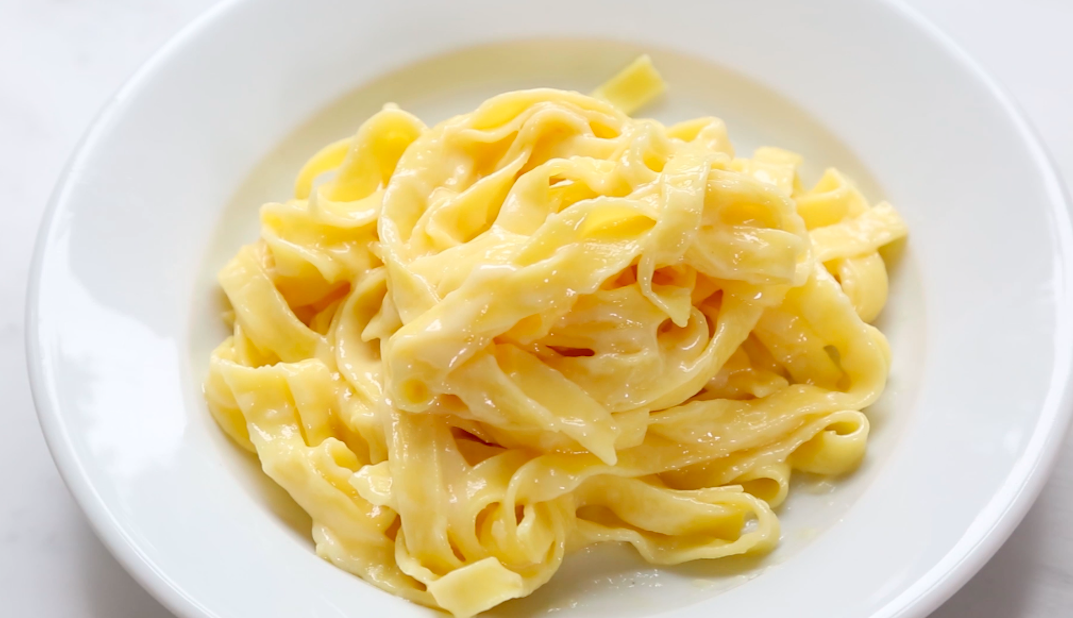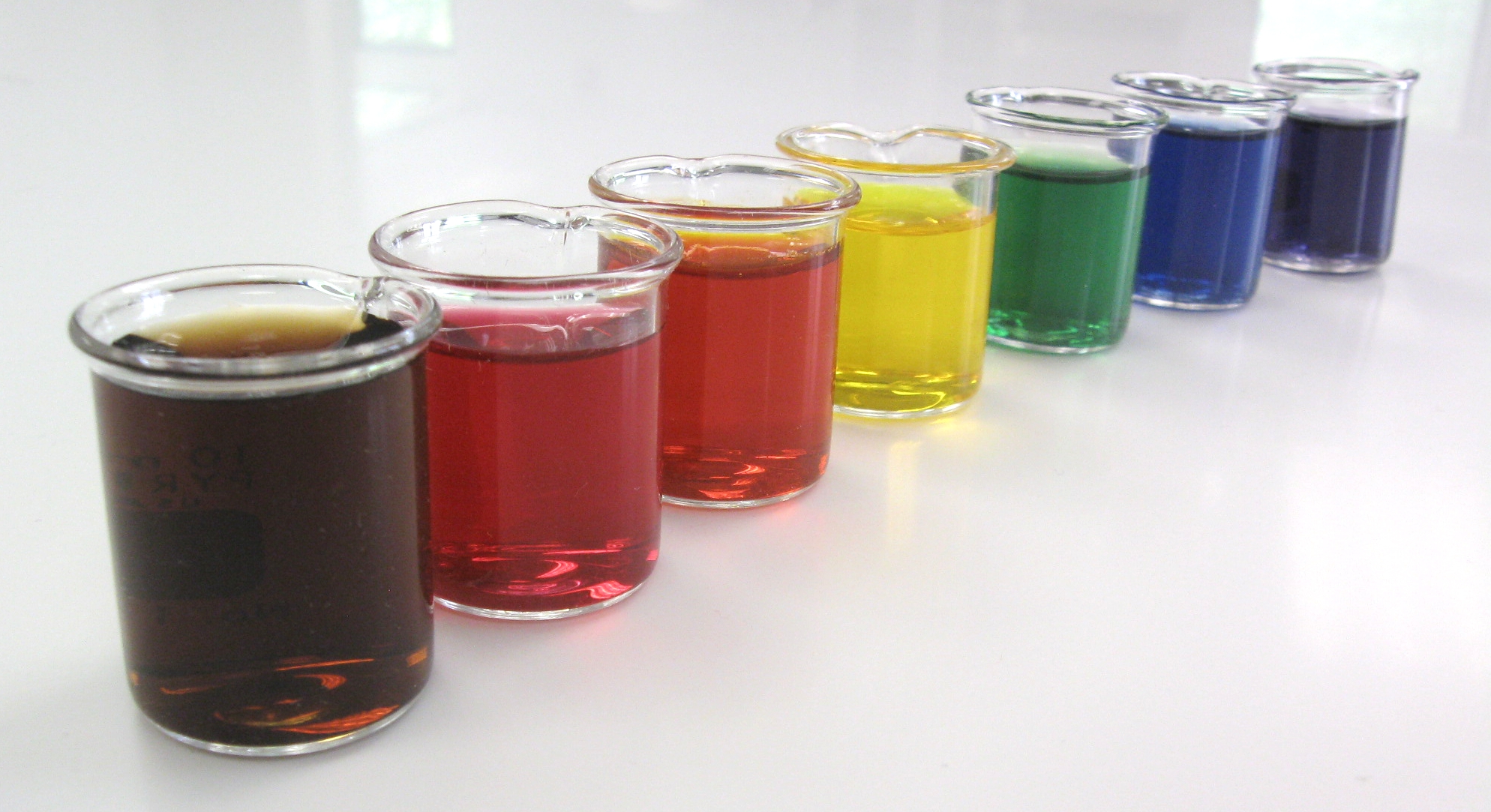|
Cheez Whiz
Cheez Whiz is a brand of processed cheese sauce or spread produced by Kraft Foods. It was developed by a team led by food scientist Edwin Traisman (1915–2007). It was first sold in 1952, and with some changes in formulation continues to be in production today. Orangish-yellow in color, it usually comes in a glass jar and is used as a topping for various foods, including corn chips and hot dogs. It is also frequently used as the cheese in a Philadelphia-style cheesesteak. It is marketed in Canada, Mexico, the Philippines, the United States, and Venezuela. In the United States it has a reputation as being junk food. Ingredients A 1953 ad in Kraft Foods’ home city, Chicago, included a label illustration listing the product’s original ingredients: “American Cheese, Water, Nonfat Dry Milk Solids, Condensed Whey, Sodium Phosphate, Cream, Worcestershire Sauce, Lactic Acid, Mustard, Salt, U.S. Certified Color--Moisture 52%, Milkfat 28%.””New Hit with Millions: Kraft’s ... [...More Info...] [...Related Items...] OR: [Wikipedia] [Google] [Baidu] |
Cheesesteak
A cheesesteak (also known as a Philadelphia cheesesteak, Philly cheesesteak, cheesesteak sandwich, cheese steak, or steak and cheese) is a sandwich made from thinly sliced pieces of beefsteak and melted cheese in a long hoagie roll. A popular regional fast food, it has its roots in the U.S. city of Philadelphia, Pennsylvania. History The cheesesteak was developed in the early 20th century "by combining frizzled beef, onions, and cheese in a small loaf of bread", according to a 1987 exhibition catalog published by the Library Company of Philadelphia and the Historical Society of Pennsylvania. Philadelphians Pat and Harry Olivieri are often credited with inventing the sandwich by serving chopped steak on an Italian roll in the early 1930s. The exact story behind its creation is debated, but in some accounts, Pat and Harry Olivieri originally owned a hot dog stand, and on one occasion, decided to make a new sandwich using chopped beef and grilled onions. While Pat was eating ... [...More Info...] [...Related Items...] OR: [Wikipedia] [Google] [Baidu] |
Modified Food Starch
Modified starch, also called starch derivatives, are prepared by physically, enzymatically, or chemically treating native starch to change its properties. Modified starches are used in practically all starch applications, such as in food products as a thickening agent, stabilizer or emulsifier; in pharmaceuticals as a disintegrant; or as binder in coated paper. They are also used in many other applications. Starches are modified to enhance their performance in different applications. Starches may be modified to increase their stability against excessive heat, acid, shear, time, cooling, or freezing; to change their texture; to decrease or increase their viscosity; to lengthen or shorten gelatinization time; or to increase their visco-stability. Modification methods Acid-treated starch (INS 1401), also called thin boiling starch, is prepared by treating starch or starch granules with inorganic acids, e.g. hydrochloric acid breaking down the starch molecule and thus reduc ... [...More Info...] [...Related Items...] OR: [Wikipedia] [Google] [Baidu] |
Cheese Sauce
Cheese sauce is a sauce made with cheese or processed cheese as a primary ingredient. Sometimes dried cheese or cheese powder is used. Several varieties exist and it has many various culinary uses. Mass-produced commercial cheese sauces are also made by various companies, in both liquid and dry forms. These prepared sauces are used by consumers and restaurants, and commercial formulations are used in the production of various prepared foods, such as macaroni and cheese mixes and frozen meals. Varieties Many sauces are prepared with cheese or processed cheese as the primary ingredient. * Alfredo sauce – an American sauce inspired by Fettuccine Alfredo * Blue cheese dressing * Caruso sauce – a South American sauce * Cheddar sauce * Chile con queso – has a smooth, creamy texture, and is very popular in the American Southwest * Crab dip * Mornay sauce – a French sauce based on béchamel * Nacho cheese – an American processed cheese sauce Cheez Whiz is an American brand of ... [...More Info...] [...Related Items...] OR: [Wikipedia] [Google] [Baidu] |
Ritz Crackers
Ritz Crackers is a brand of snack cracker introduced by Nabisco in 1934. The original style crackers are disc-shaped, lightly salted, and approximately in diameter.. Each cracker has seven perforations and a finely scalloped edge. Today, the Ritz cracker brand is owned by Mondelēz International. A single serving of the original cracker (about 5 crackers or 15 grams) provides of food energy, 1 gram of protein, and 4 grams of fat; the whole wheat variety provides and 2.5 grams of fat. History In the early 1900s, the Jackson Cracker company of Jackson, Michigan, developed a small, round cracker called the Jaxon. The company was bought out by Nabisco in 1919. Nabisco introduced the Ritz Cracker in 1934. Looking to compete with the similar ''Hi Ho'' cracker made by their competitor Sunshine Biscuits, they tasked an employee, Sydney Stern, to create a name and a marketing plan. Stern chose the name 'Ritz', which appealed to individuals enduring the privations of th ... [...More Info...] [...Related Items...] OR: [Wikipedia] [Google] [Baidu] |
Natural Flavor
A flavoring (or flavouring), also known as flavor (or flavour) or flavorant, is a food additive used to improve the taste or smell of food. It changes the perceptual impression of food as determined primarily by the chemoreceptors of the gustatory and olfactory systems. Along with additives, other components like sugars determine the taste of food. A flavoring is defined as a substance that gives another substance taste, altering the characteristics of the solute, causing it to become sweet, sour, tangy, etc. Although the term, in common language, denotes the combined chemical sensations of taste and smell, the same term is used in the fragrance and flavors industry to refer to edible chemicals and extracts that alter the flavor of food and food products through the sense of smell. Owing to the high cost, or unavailability of natural flavor extracts, most commercial flavorings are "nature-identical", which means that they are the chemical equivalent of natural flavors, but c ... [...More Info...] [...Related Items...] OR: [Wikipedia] [Google] [Baidu] |
Enzymes
Enzymes () are proteins that act as biological catalysts by accelerating chemical reactions. The molecules upon which enzymes may act are called substrate (chemistry), substrates, and the enzyme converts the substrates into different molecules known as product (chemistry), products. Almost all metabolism, metabolic processes in the cell (biology), cell need enzyme catalysis in order to occur at rates fast enough to sustain life. Metabolic pathways depend upon enzymes to catalyze individual steps. The study of enzymes is called ''enzymology'' and the field of pseudoenzyme, pseudoenzyme analysis recognizes that during evolution, some enzymes have lost the ability to carry out biological catalysis, which is often reflected in their amino acid sequences and unusual 'pseudocatalytic' properties. Enzymes are known to catalyze more than 5,000 biochemical reaction types. Other biocatalysts are Ribozyme, catalytic RNA molecules, called ribozymes. Enzymes' Chemical specificity, specific ... [...More Info...] [...Related Items...] OR: [Wikipedia] [Google] [Baidu] |
Cheese Culture
A fermentation starter (called simply starter within the corresponding context, sometimes called a mother) is a preparation to assist the beginning of the fermentation process in preparation of various foods and alcoholic drinks. Food groups where they are used include breads, especially sourdough bread, and cheese. A starter culture is a microbiological culture which actually performs fermentation. These starters usually consist of a cultivation medium, such as grains, seeds, or nutrient liquids that have been well colonized by the microorganisms used for the fermentation. These starters are formed using a specific cultivation medium and a specific mix of fungal and bacterial strains.Norman F. Haard, S.A. Odunfa, Cherl-Ho Lee, R. Quintero-Ramírez, Argelia Lorence-Quiñones, Carmen Wacher-Radarte, ''Fermented Cereals: A Global Perspective'', Food and Agriculture Organization The Food and Agriculture Organization of the United Nations (FAO)french: link=no, Organisatio ... [...More Info...] [...Related Items...] OR: [Wikipedia] [Google] [Baidu] |
Color Additive
Food coloring, or color additive, is any dye, pigment, or substance that imparts color when it is added to food or drink. They come in many forms consisting of liquids, powders, gels, and pastes. Food coloring is used in both commercial food production and domestic cooking. Food colorants are also used in a variety of non-food applications, including cosmetics, pharmaceuticals, home craft projects, and medical devices. Purpose of food coloring People associate certain colors with certain flavors, and the color of food can influence the perceived flavor in anything from candy to wine. Sometimes, the aim is to simulate a color that is perceived by the consumer as natural, such as adding red coloring to glacé cherries (which would otherwise be beige), but sometimes it is for effect, like the green ketchup that Heinz launched in 2000. Color additives are used in foods for many reasons including: * To make food more attractive, appealing, appetizing, and informative * Offset colo ... [...More Info...] [...Related Items...] OR: [Wikipedia] [Google] [Baidu] |
Sorbic Acid
Sorbic acid, or 2,4-hexadienoic acid, is a natural organic compound used as a food preservative. It has the chemical formula and the structure . It is a colourless solid that is slightly soluble in water and sublimes readily. It was first isolated from the unripe berries of the ''Sorbus aucuparia'' (rowan tree), hence its name. Production The traditional route to sorbic acid involves condensation of malonic acid and crotonaldehyde. It can also be prepared from isomeric hexadienoic acids, which are available via a nickel-catalyzed reaction of allyl chloride, acetylene, and carbon monoxide. The route used commercially, however, is from crotonaldehyde and ketene. An estimated 30,000 tons are produced annually. History Sorbic acid was isolated in 1859 by distillation of rowanberry oil by A. W. von Hofmann. This affords parasorbic acid, the lactone of sorbic acid, which he converted to sorbic acid by hydrolysis. Its antimicrobial activities were discovered in the late 1930s and 1 ... [...More Info...] [...Related Items...] OR: [Wikipedia] [Google] [Baidu] |
Sodium Alginate
Alginic acid, also called algin, is a naturally occurring, edible polysaccharide found in brown algae. It is hydrophilic and forms a viscous gum when hydrated. With metals such as sodium and calcium, its salts are known as alginates. Its colour ranges from white to yellowish-brown. It is sold in filamentous, granular, or powdered forms. It is a significant component of the biofilms produced by the bacterium ''Pseudomonas aeruginosa'', a major pathogen found in the lungs of some people who have cystic fibrosis. The biofilm and ''P. aeruginosa'' have a high resistance to antibiotics, but susceptible to inhibition by macrophages. Structure Alginic acid is a linear copolymer with homopolymeric blocks of (1→4)-linked β-D- mannuronate (M) and α-L- guluronate (G) residues, respectively, covalently linked together in different sequences or blocks. The monomers may appear in homopolymeric blocks of consecutive G-residues (G-blocks), consecutive M-residues (M-blocks) or alternat ... [...More Info...] [...Related Items...] OR: [Wikipedia] [Google] [Baidu] |
Mustard (condiment)
Mustard is a condiment made from the mustard seed, seeds of a mustard plant (white/yellow mustard, ''white mustard, Sinapis alba''; brown mustard, ''Brassica juncea''; or black mustard, ''Brassica nigra''). The whole, ground, cracked, or bruised mustard seeds are mixed with water, vinegar, lemon juice, wine, or other liquids, salt, and often other flavorings and spices, to create a paste or sauce ranging in color from bright yellow to dark brown. The seed itself has a strong, pungent, and somewhat bitter taste. The taste of mustard condiments ranges from sweet to spicy. Mustard is commonly paired with meats, vegetables and cheeses, especially as a condiment for sandwiches, hamburgers, and hot dogs. It is also used as an ingredient in many salad dressing, dressings, Glaze (cooking technique), glazes, sauces, soups, and marinades. As a cream or as individual seeds, mustard is used as a condiment in the cuisine of Indian cuisine, India and Bangladeshi cuisine, Bangladesh, the Medi ... [...More Info...] [...Related Items...] OR: [Wikipedia] [Google] [Baidu] |






